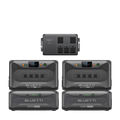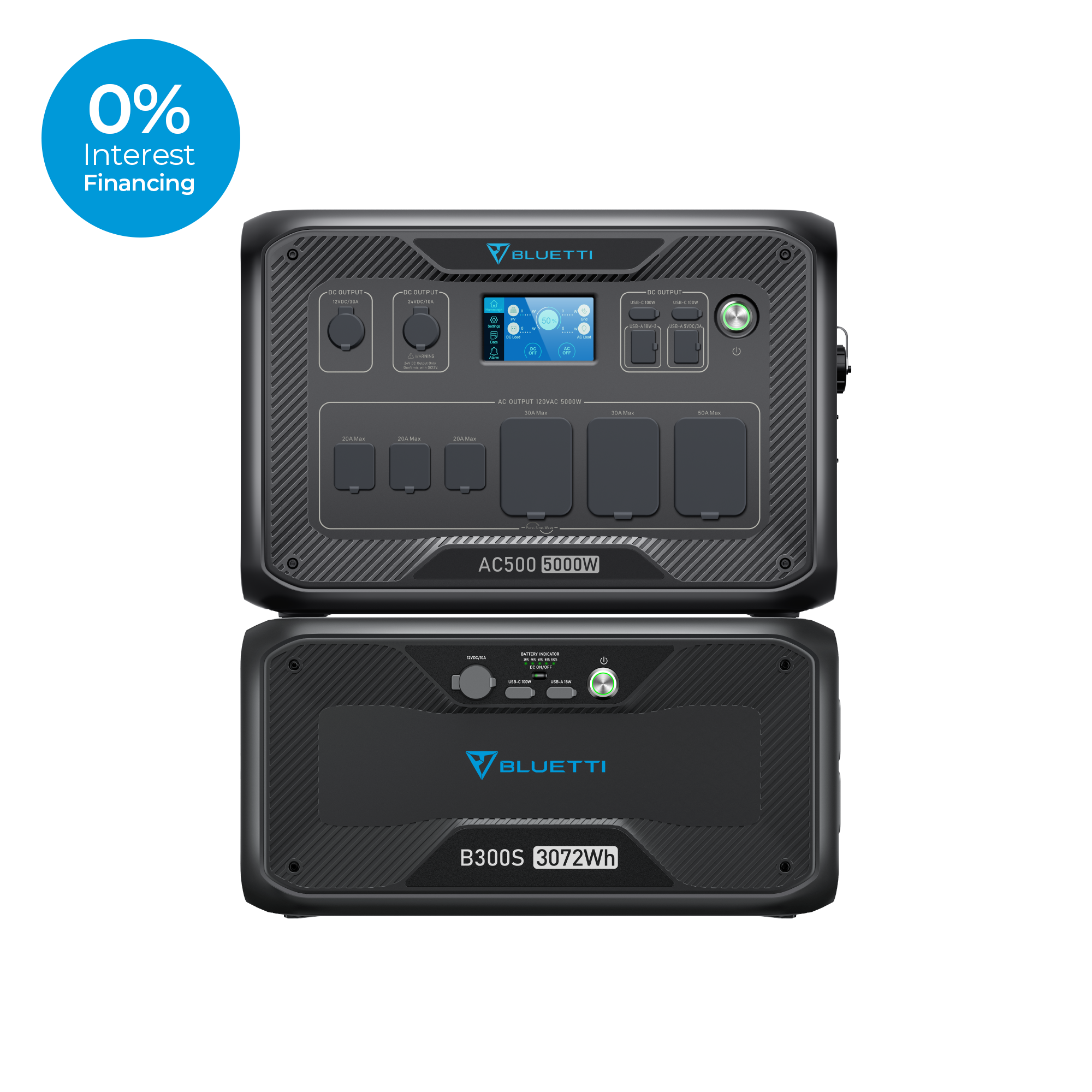Your cart is empty
Shop our productsChoosing the right refrigerator size for your kitchen is a serious business. You can choose different refrigerator sizes based on how wide how tall, and how deep the space in your kitchen is, and the type of fridge you want.
Having a good-sized refrigerator ensures that your kitchen has a good appearance and that the fridge is working properly. Let’s explore different refrigerator sizes and how to measure your kitchen space to understand potential fridge sizes.
What Are Standard Refrigerator Sizes?

Standard refrigerator sizes vary depending on the type of fridge and brand. On average, a typical fridge comes at 20 to 25 cubic feet or is 28 to 39 inches wide, 61 to 71 inches in height, and 28 to 38 inches deep. These numbers can differ based on what type of fridge you refer to.
Let’s take a look at the average size of four different types of refrigerators.
|
Fridge Type |
Average Width in inches |
Average Height in inches |
Average Depth in inches |
Average Volume in Cubic Feet |
|
Top-Freezer |
28 to 33 |
62 to 66 |
28 to 34 |
14 to 22 |
|
Bottom Freezer |
29 to 36 |
65 to 70 |
33 to 34 |
19 to 24 |
|
Side-by-Side |
32 to 36 |
65 to 70 |
29 to 35 |
20 to 29 |
|
French Door |
30 to 36 |
68 to 70 |
29 to 35 |
20 to 30 |
|
Counter-Depth |
30 to 36 |
68 to 70 |
23 to 27 |
15 to 25 |
|
Minifridge |
18 to 24 |
18 to 33 |
18 to 26 |
1.7 to 4.5 |
While these sizes are standard for different fridge types, always check out the fridge's width, height, and depth you want to buy online or in-store, as the sizes can differ slightly for different brands.
How Do I Measure for a New Refrigerator?
Are you thinking of buying a new fridge? But, before you can choose a fridge, you need to check out what size fridge would suit your kitchen. For this, you just need a measuring tape, pencil, and paper, and just follow the steps below.
Step 1: Measure for the Width

If your refrigerator will be between cabinets or counters, measure the width of the empty space between two cabinets or counters. Similarly, if your fridge is located next to a wall, it’s best to leave space of 2 ½ inches from the wall for the hinge side of the fridge door. Your fridge door needs space to move and open easily.
For simple top freezers and other types, the width and depth may increase to 45 to 50 inches when the door is fully open. Moreover, if you have a counter-depth fridge, it will be wider than other types because such type of a fridge is closer to the depth of your kitchen’s countertops.
Step 2: Measure for the Height
As long as the place where you place your refrigerator has nothing on the top wall, height measurement isn’t an issue like width and depth are. However, if the cabinets are above the fridge’s space, measure the height from the floor to the bottom of the cabinets to get a height estimate.
Step 3: Measure for the Depth
You’ve calculated how wide and high your fridge should be. Now, suppose your fridge will be placed between two countertops. So, to measure the depth, measure the distance from the wall to the countertop’s edge. Picture a 3D image in your mind; the width is the width, the height is the height, and the depth is basically the length of the cabinet top’s edge to the back wall.
If your fridge is going to be placed in an open space, measuring the depth doesn’t matter, but to properly adjust your fridge to your kitchen design and setting, you should measure depth with the fridge door open and depth without the fridge door.
Moreover, depth with handles and closed door, depth without handles and closed door, depth with door at 90 degrees, etc., to get a good idea of what depth you need. This ensures that the space size you measured at home will accommodate the fridge.
Step 4: Adjust Measurements for the Breathing Room
Before placing a fridge, ensure adequate room between the back of the fridge and the back wall for ventilation. Similarly, leave some space on all sides for ventilation for a fridge between two countertops.
Moreover, even if you are limited on kitchen space, all the doors and drawers of your fridge should be fully open. So, calculate depth with and without open doors and inner drawers to choose the right fridge.
Leave ½ inch in front, back, and on both sides so that there is ventilation room and the doors can open with dinging or damage.
Additional Tips:
After following these steps, you will know what size (width, height, and depth) fridge will go well in your kitchen. The last and most important step. Before buying a fridge, clear stuff out of the way so that your fridge can easily get into the fridge and be placed properly.
Measuring the width of your hallways and all the places between your doorway and the kitchen is a good idea. You need to know how big of a fridge can get into your home, from the doorway to the kitchen, and if you need to shift things to make room.
How to Choose the Right Refrigerator Sizes?
The right refrigerator size varies depending on the fridge’s space in your kitchen and the type of fridge you want. You need to measure out the space based on what type of fridge you choose, like top freezer, side-by-side, french door, etc., or counter-depth or mini-fridge.
The best approach is to first decide on a type of fridge. If you want full-length ones like a top freezer or a French door fridge, you need some open space in your kitchen. It could be between cabinets or simply just open space you left for the fridge. Do the same if you are a counter-depth or minifridge type of guy.
The right refrigerator size for you is basically up to you, and you should measure out the kitchen space for the fridge and keep ventilation space in mind, too.
Top Tips for Save Energy with Your Refrigerator
Refrigerators are one of the most electricity-hungry appliances in most homes. That’s why trying to save energy with your refrigerator is really important. You can use some great tips and tricks to reduce power consumption in your home.
- Set at a Good Temperature: You can set the temperature according to the season. In summer, you can keep it higher or on average. Plus, you can lower it in winter according to the outside temperature.
- Keep Coils Clean: If the coils are dirty and have dust, it can reduce the cooling capacity, and keeping them clean increases fridge efficiency.
- Check Door Seals: Make sure that your fridge’s door seals are working properly. If they aren’t, your fridge will remain slightly open and consume more electricity to constantly maintain the temperature inside the fridge.
- Place Cool Food Inside: Instead of placing piping hot food into the fridge, you should let it cool down first. This way, the fridge doesn’t have to work extra to reestablish the temperature inside the fridge again.
- Defrost Your Fridge: Ice builds up in your freezer and the back wall of the fridge, so it’s important to regularly defrost your fridge. Scrap out the ice, or turn the fridge off to let it melt, and then clean your fridge.
- Don’t Open the Door Too Often!: If you keep the fridge door open too long or open it frequently, the fridge has to do extra work to maintain the inside temperature. This can increase power consumption.
- Upgrade Your Fridge: Is your fridge old, like really old? Then, you should think about changing to a newer, energy-efficient model.
Following these tips and keeping your fridge clean can save on energy costs.
Using a Solar Generator to Run Your Refrigerator
Before we go into which BLUETTI Solar Generators work great with different refrigerator sizes, let’s discuss why you should consider switching to a solar generator for your fridge.
Solar Generators use Sun's energy, so they are super eco-friendly, and while the initial cost is higher, they are super economical long-term. Over time, a solar generator coupled with a solar panel can help save up on your electricity bill.
Furthermore, if you live in a region where the grid is highly inconsistent, a solar generator can free you from grid dependency, and you’ll have consistent power to run your fridge.
The BLUETTI AC200MAX Power Station is a good option for a full-size fridge. With Lithium Iron Phosphate in each battery, each battery has a life cycle of 3500+ to 80%. Moreover, AC200MAX has a 2,048 Wh capacity and is a great option if you want to simultaneously run other things in the hour.

Furthermore, if you want to install Solar Panels with this solar generator, you should try the BLUETTI AC200MAX Solar Generator Kit. It has 3 PV200 solar panels and has a 2400W solar input. Plus, it will run a 90-watt fridge for 17-18 hours easily without putting stress on the fridge.
Unlike traditional generators, solar generators have fewer parts that move, so there is little wear and tear. Hence, they require minimal maintenance. Also, BLUETTI Solar Generators are portable, quiet, and environmentally friendly.
Final Thoughts
Choosing a refrigerator size depends on the fridge space in your kitchen. You can measure out what height, width, and depth will fit in your kitchen space by following the steps in our guide. Moreover, you should adjust your habits to reduce energy consumption and save electricity.
Saving energy is crucial today, and you can consider switching to solar to lower reliance on the grid. You can explore solar generator options to run your fridge and other appliances and reduce your grid energy use.
Shop products from this article
Be the First to Know
You May Also Like

What Does a 30% Federal Solar Tax Credit Mean and How to Apply?
Governments around the world are offering programs that encourage homeowners to switch to solar energy. Among the most notable programs is the 30% Federal Solar Tax Credit. It reduces your...

Deadly Flooding Devastates U.S. South and Midwest — What You Need to Know


















































































































































































































































